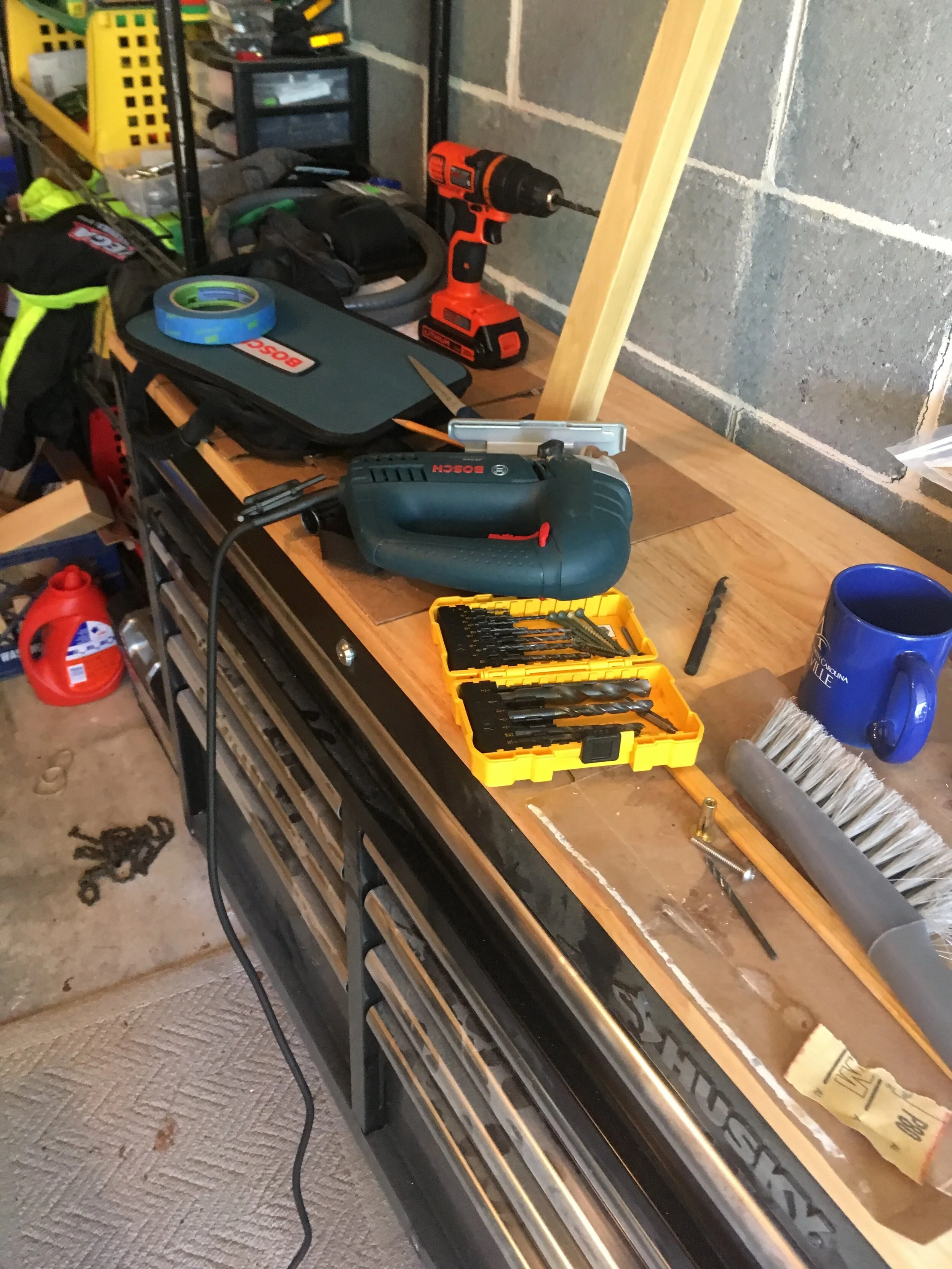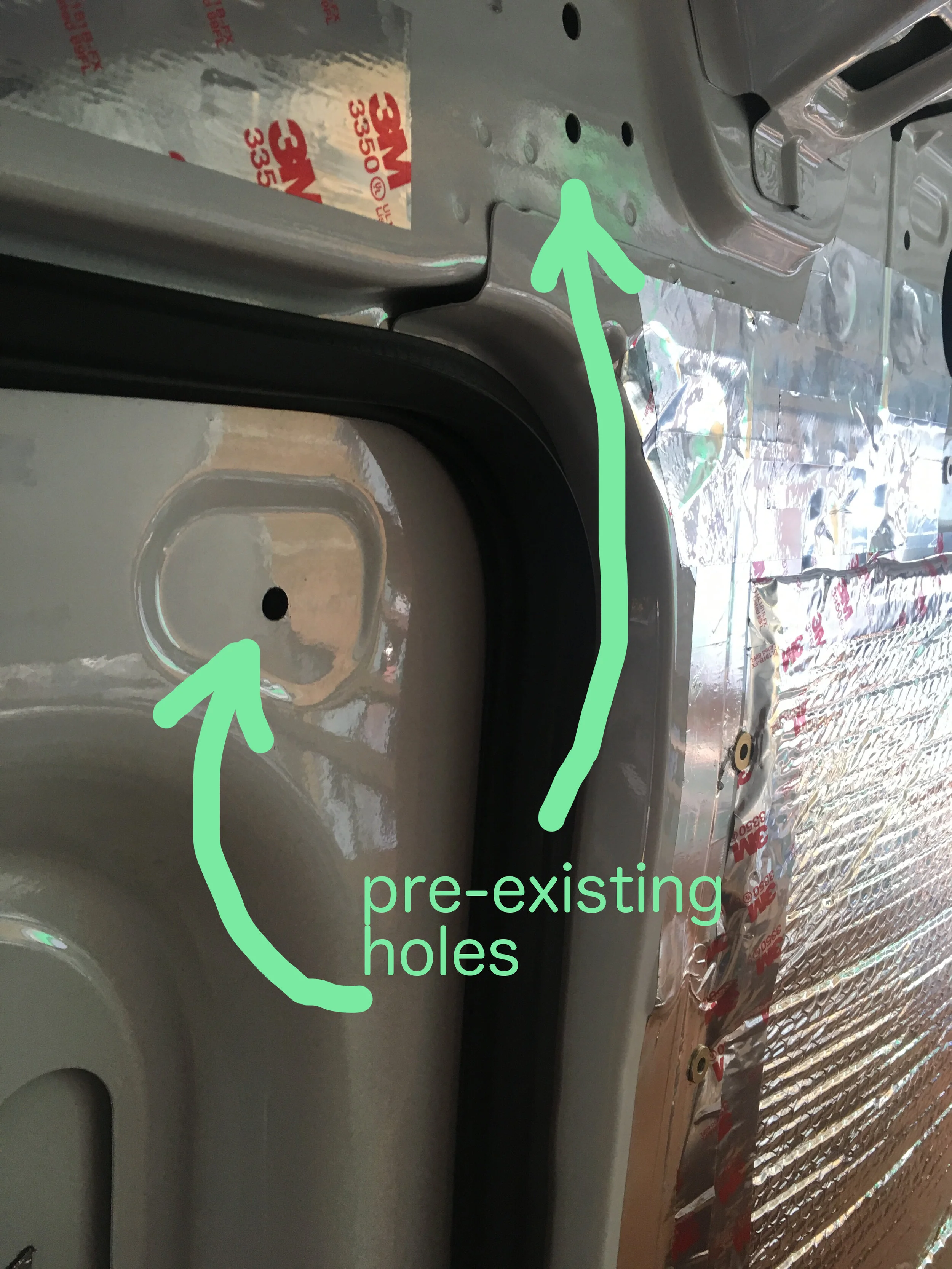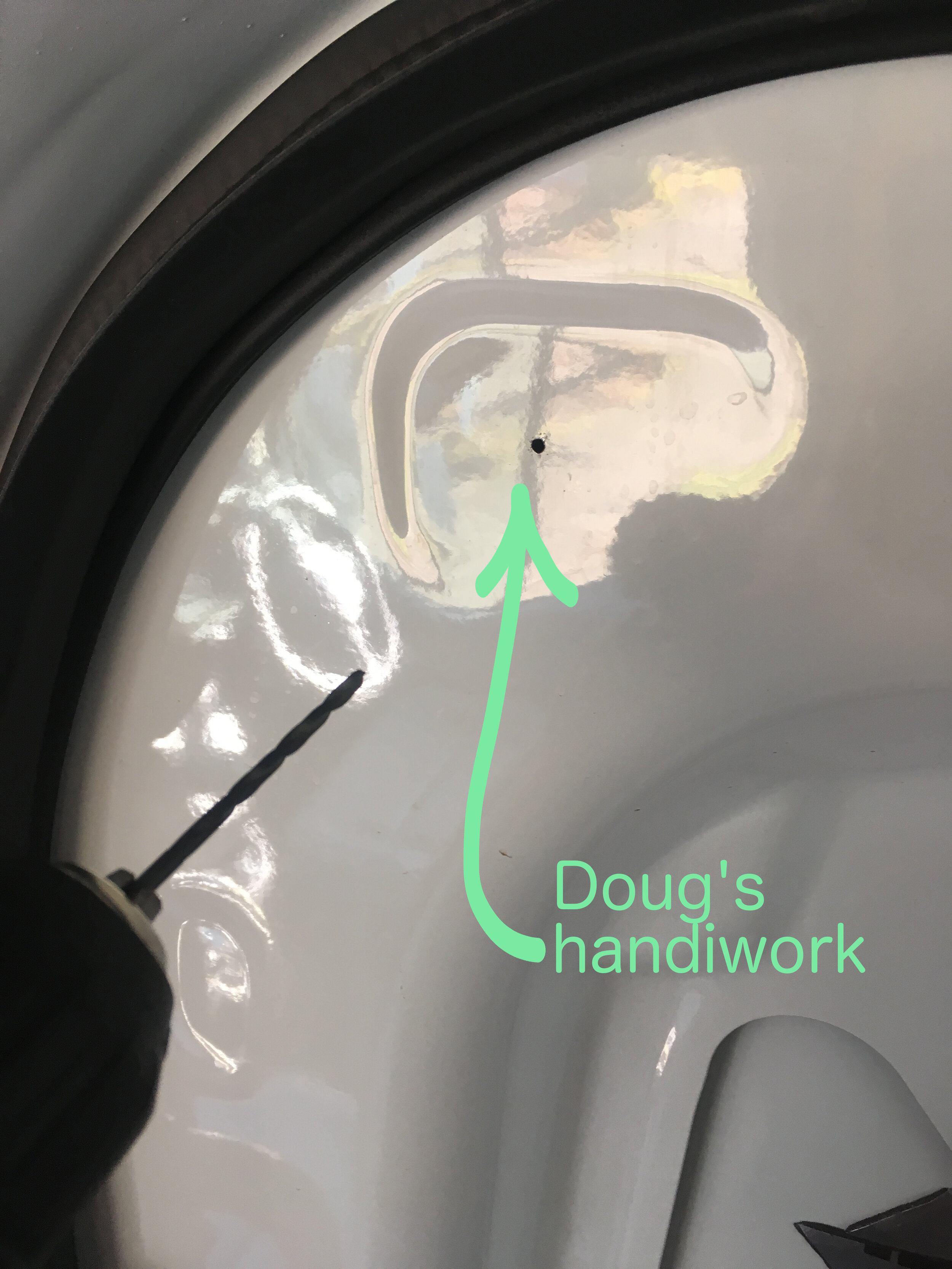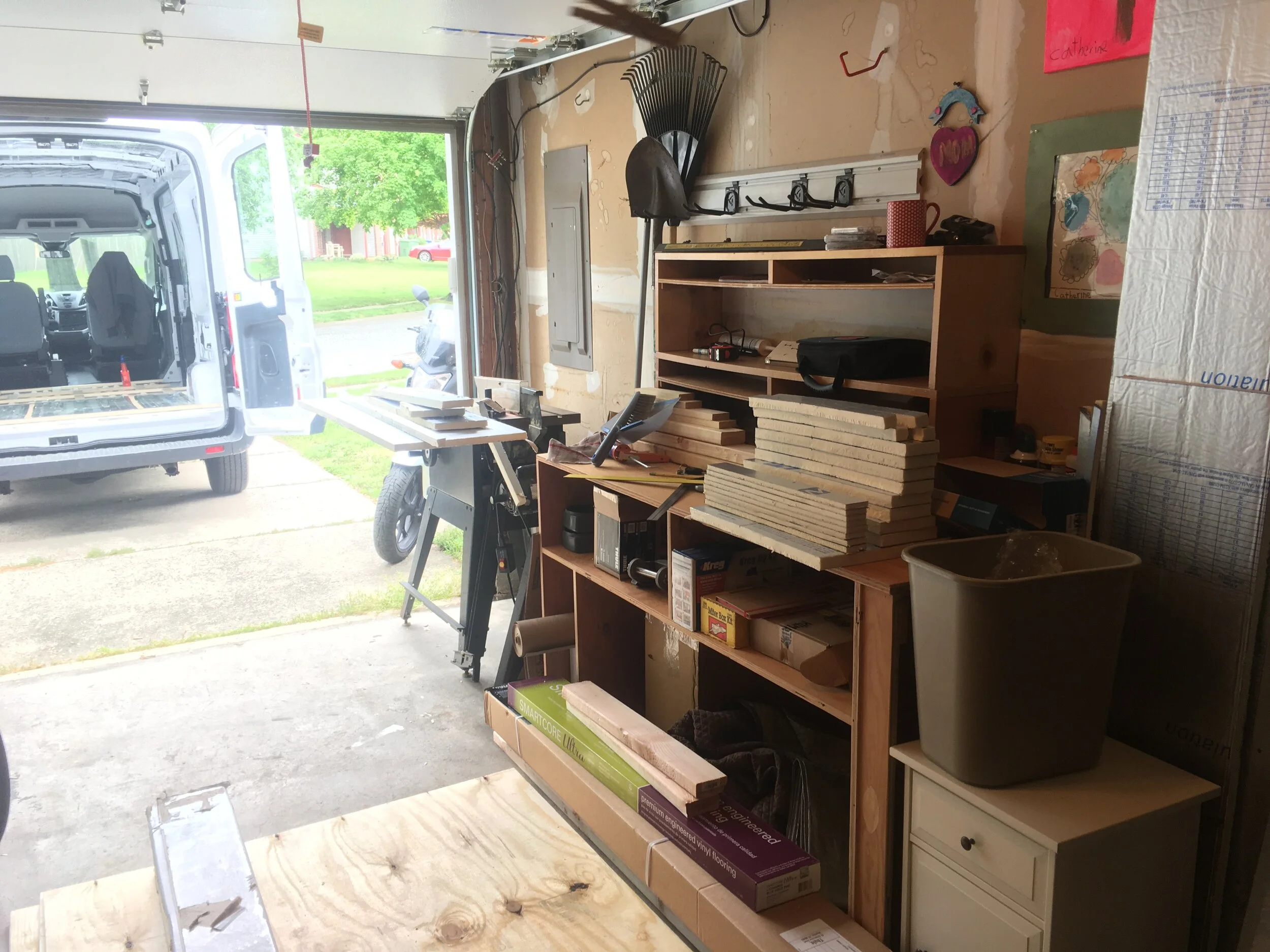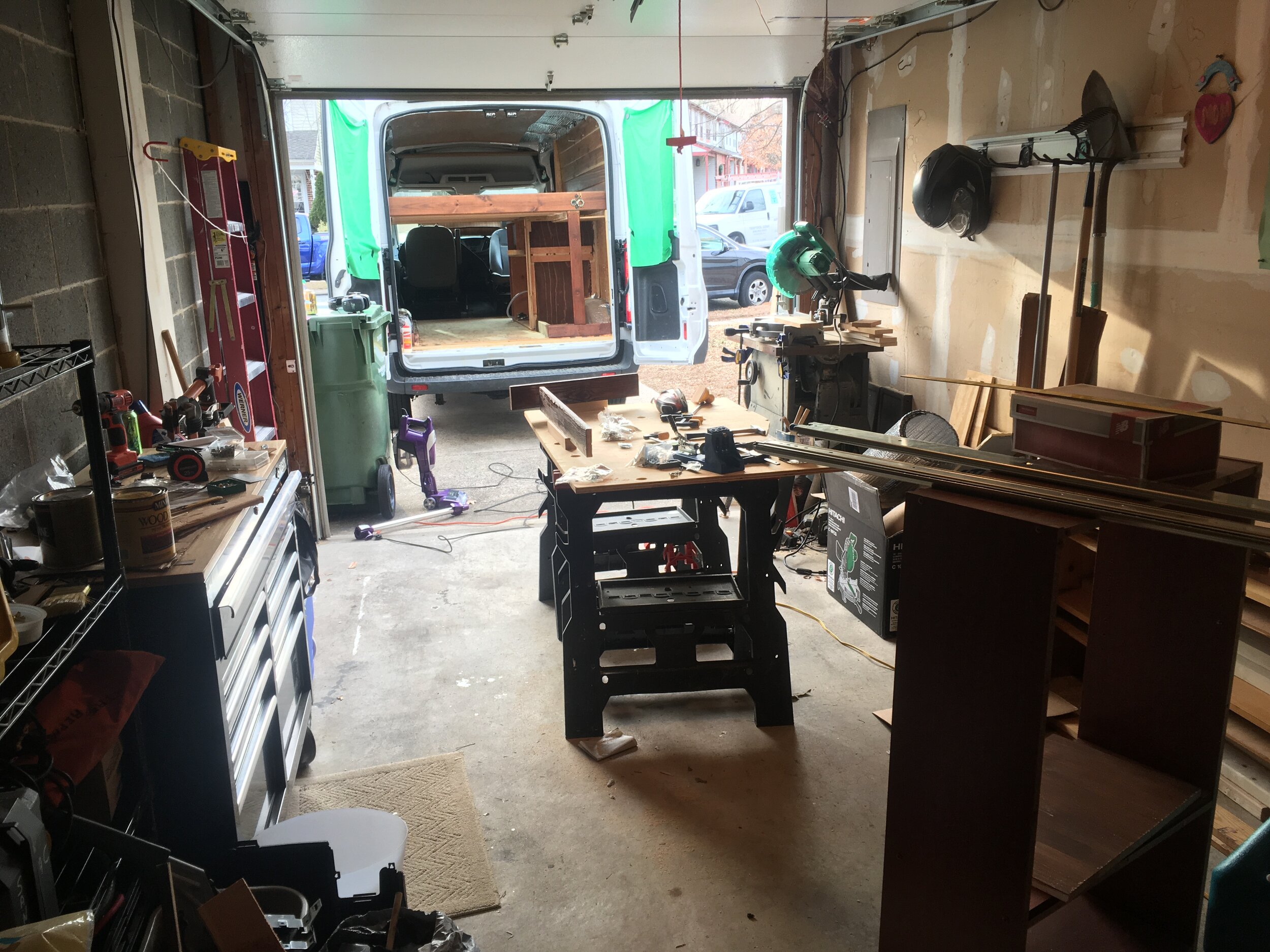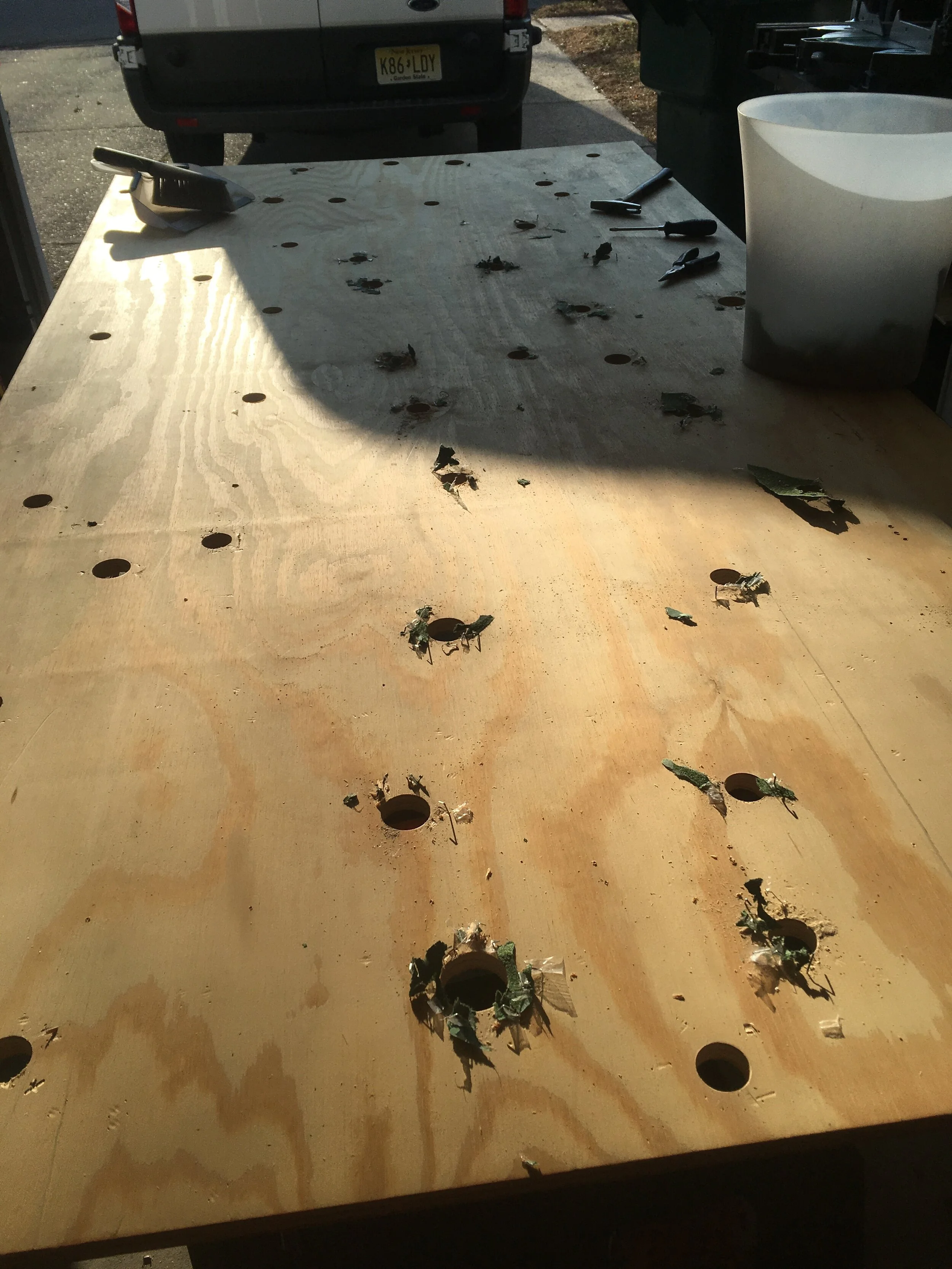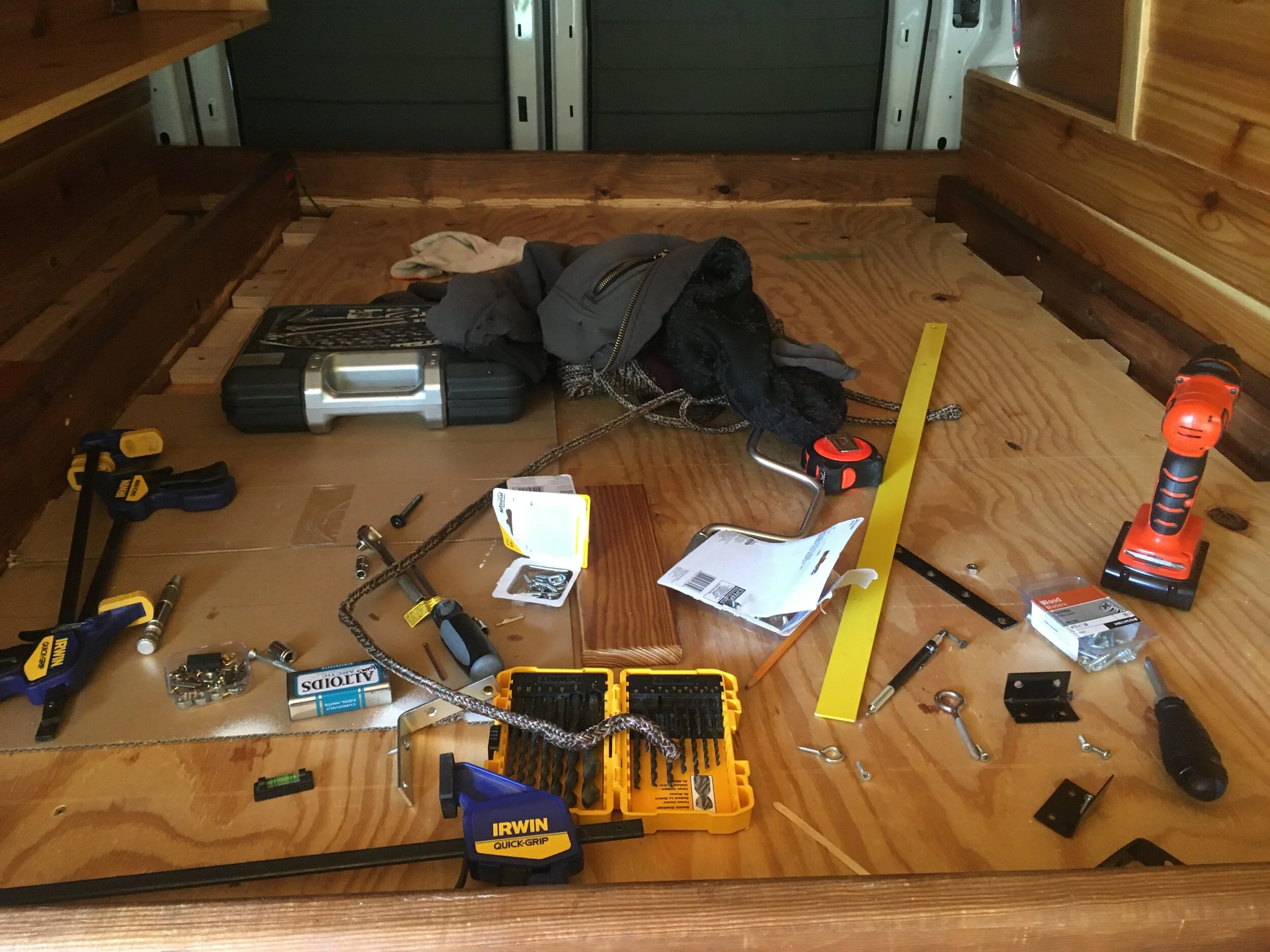tools and workspace
Let’s start with a list of tools you can expect to use. For the sake of brevity, I’m going to omit really basic stuff, like screwdrivers/pliers/clamps/hammers.
Just a couple tools of the trade.
Miter saw (for straight cuts)
Jigsaw (for freeform cuts)
Doug notes: I could’ve made long, square cuts with a table saw, but I found ways to use the jigsaw to do that. And the reason I didn’t use the table saw is because I was working in limited space. I had a table saw, but every time I would’ve wanted to use that, I would have had to drag it out to the center of the driveway, and fuck that.
A good drill (in Doug’s words, “The drill was my sidearm”)
Router (for carving channels in wood)
Palm sander
Ratchet screwdriver (to give your wrist a break)
Speed handle (to get into hard-to-reach places)
Crossnuts, aka anchor nuts (1/4-20 x .020-.280 is the size for the Ford Transit)
I’d never heard about cross/anchor nuts, but man, Doug turned me into a believer. I didn’t know it was possible to love a tool as much as much as Doug loves anchor nuts (and I’ve loved some tools in the past — hiyo!!)
You know what, I’m gonna let Doug take the wheel here. Tell em about anchor nuts, babe:
Doug says: I call them anchor nuts, ‘cause that’s what they were on jets. Basically, they’re an adaptor that turns any hole into a threaded anchor, so you can put a bolt in.
The Ford Transit, and I bet the other vans, have countless frickin’ holes all over the walls and ceiling. Some of them have threads, but when I got these anchor nuts, I was able to strategically make any of these holes into anchor points, which is how I put up the wall and many other things. If you need an anchor point somewhere and there’s no hole, you can make one.
They’re essential. If I were to recommend one thing for a build project, it would be these. And also, buy the anchor nut installer. The alternative is using two crescent wrenches and hurting your wrist a whole lot.
Thanks Doug! Now, let’s talk about your workspace. Don’t be fooled by some of the YouTubers out there — you don’t need a giant workshop or a barn to build out a van. Doug was able to do it in his mom’s garage and driveway.
Part of making a small space work for you is staying organized and tidy. It also helps if you can look for potential in found objects. Doug has a good story about that:
Doug says: So, it took me roughly 15 months to build the van, and I did it in my mother’s driveway. More than a couple times, neighbors would approach me with odd jobs, seeing as how I was handy with woodworking. This was the last thing my next-door neighbor was trying to get rid of before moving out. It’s the base of an old train set he had since he was a kid.
The neighbor probably just expected Doug to cut it up and throw it away. Naturally, Doug started thinking of ways to repurpose it.
Doug continues: Obviously it’s riddled with holes, so I couldn’t use it for building purposes. However, whilst cutting it into pieces to dispose of it for him, I realized it could be another workbench.
I had my toolbox top, but that was pretty narrow. And then I had the table saw top, but that had the miter saw on it. So this was a perfect work surface for bigger projects. I took a third of it and just stuck it on sawhorses, which was great because I could set it up and take it down in a minute. I could easily store it up against the wall, and it took up next to no room. And when you’ve got a piece of wood like this that you don’t care about, you can just drill into it.
Brooke adds: At times during its evolution, the van itself turns into a workspace.
Doug says: It starts as a shell, and then it starts to look like a home, but then becomes an active construction site.
